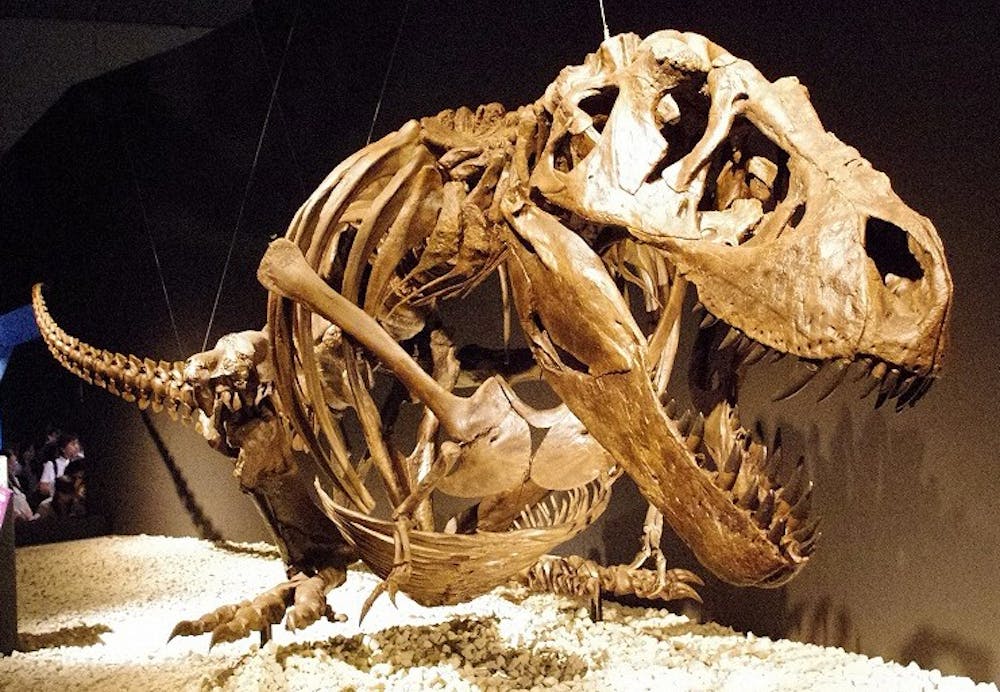Throughout history biological research has often focused on the study of DNA. The scientific community has, at times, neglected a category of macromolecules that play a crucial role in regulating genetic inheritance: proteins.
Mary Schweitzer, a professor of biology at North Carolina State University, and her team made their discovery by examining the remnants of a Tyrannosaurus rex bone.
Schweitzer’s team was able to extract proteins from dinosaur fossils that are estimated to be 80 million years old. These proteins are encoded by DNA and possess all the quintessential functions needed to carry out and maintain cell growth.
“When you think about it, it is the message of DNA — the proteins — that are actually the stuff on which natural selection works. The sequences of proteins can be used to generate ‘family trees’ of organisms, just like DNA,” Schweitzer said in a press release. “But modifications to proteins, which are not found in DNA and can’t be reliably predicted from DNA sequence alone, can tell us how a protein functioned, because the function of a protein is determined by its 3D structure.”
Schweitzer supports her claim using collagen, the most abundant protein found in mammals, as an example. It is also the main structural protein present in the extracellular space of various connective tissues within animal bodies.
Collagen consists of a proline amino acid with an extra hydroxide group attached to it. This unique chemical structure makes it almost impossible to be misidentified. From an evolutionary standpoint, DNA changes almost never occur without the aid of proteins. Therefore, it is a much more practical approach to instead study the changes in protein and scientifically deduce how it correlates to the evolution of DNA over time.
In addition, studying proteins can reveal information about specific variables such as the age of the sample and the environmental factors that the sample has been exposed to. Researchers are also searching for clues as to why certain proteins degrade easily while others can remain intact for millions of years.
The research team has discovered that some types of proteins are durable and easier to preserve than DNA, thus making them more convenient targets for investigation. Schweitzer collected information through extracting samples from old dinosaur bones.
After repeatedly proving that such a protein extraction can be successfully performed, Schweitzer’s team is now switching gears toward developing more efficient methods of detecting proteins without damaging their structural compositions.
The research at this point heavily relies on mass spectrometry, which is not an ideal technique because protein specimen are often damaged during the process.
The team’s second goal is to use these proteins to delve into the evolutionary, physiological and reproductive aspects of the organism. For example, they aim to learn more about the reasoning behind why certain proteins could stand the test of time and remain structurally intact while others can’t.
Schweitzer has recently presented her team’s findings at the Experimental Biology 2017 meeting, which took place in Chicago from April 22 to 26.
The meeting involves representatives from the American Association of Anatomists, and it is an annual gathering for scientists in the field to share and spread their work.
Schweitzer believes that studying dinosaur proteins not only sheds light on the biological context in the era in which dinosaurs roamed the planet, but also on information that suggests scientific promise in the future.

















